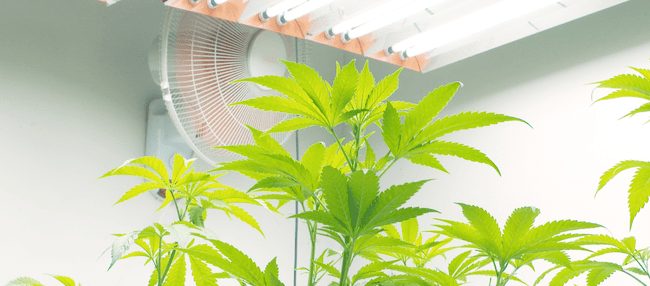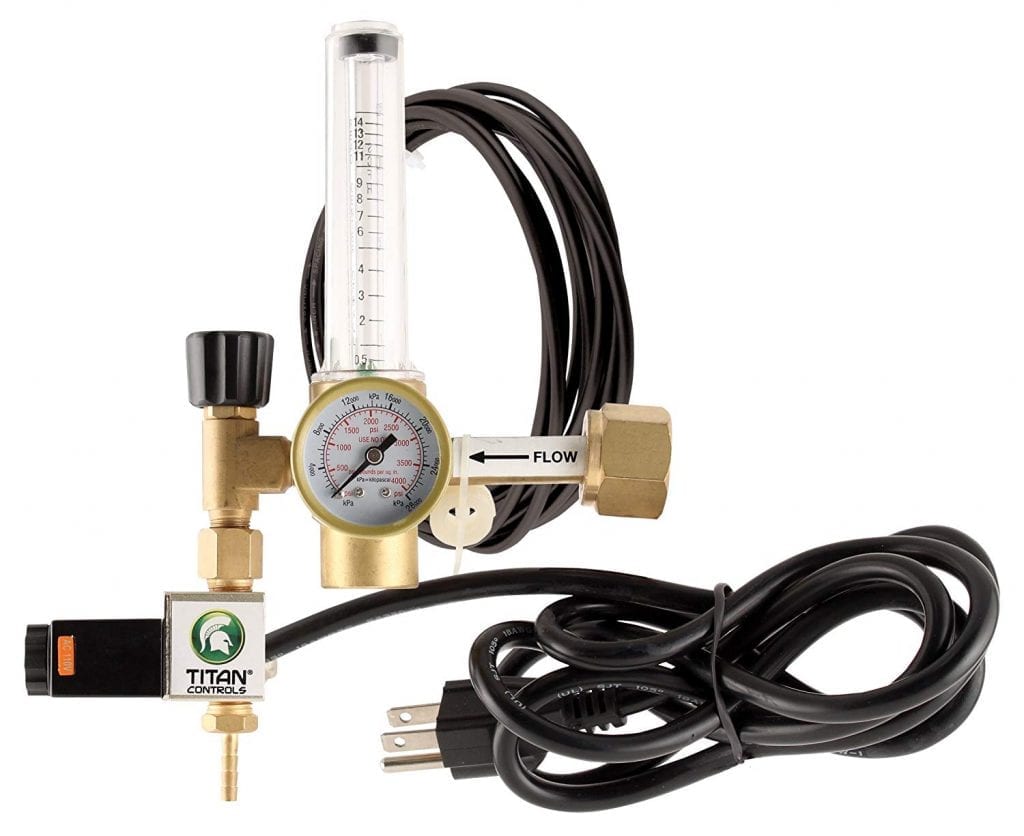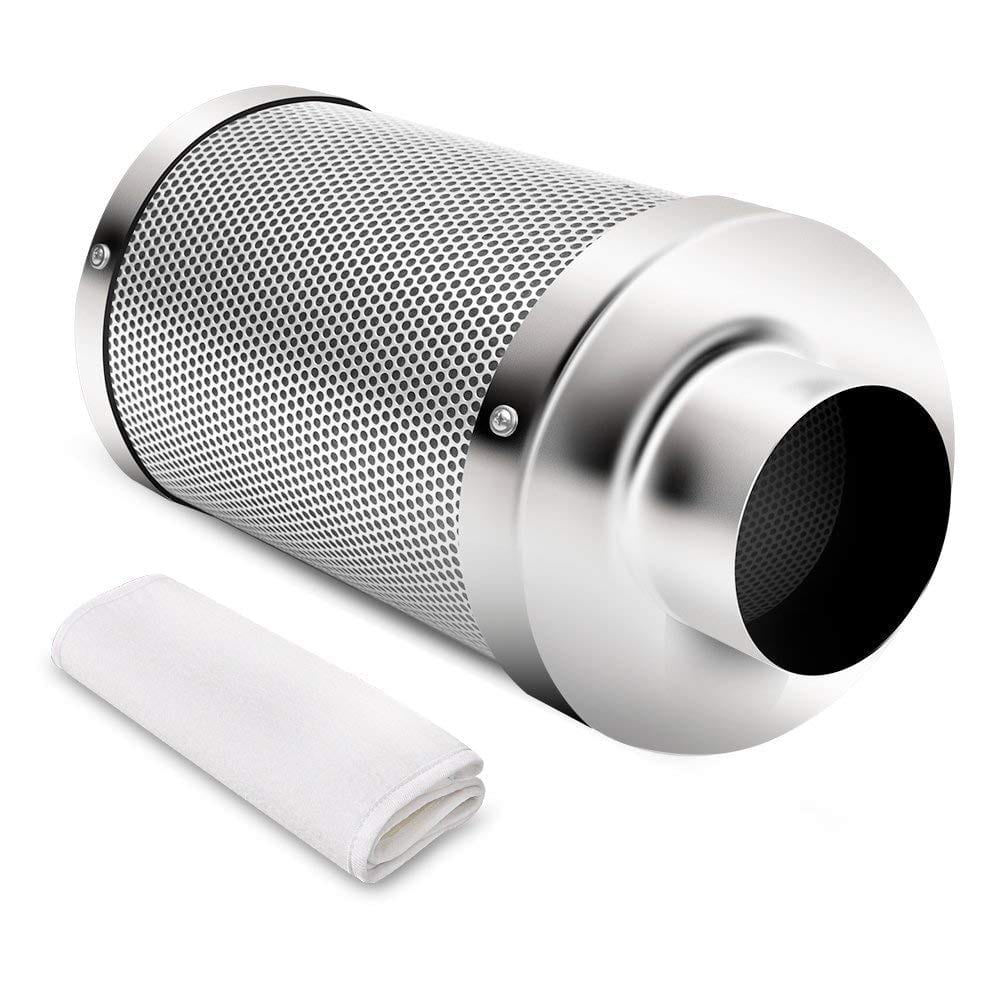You can’t survive without air, and neither can your plants. That’s pretty much obvious, right?
Well, things remain the same when it comes to indoor plants. Just because your plants are growing within the four walls doesn’t mean they don’t need fresh air. You can’t change how plants function.
But hey, how can your grow area get the proper supply of fresh air? That’s one question we can’t ignore.
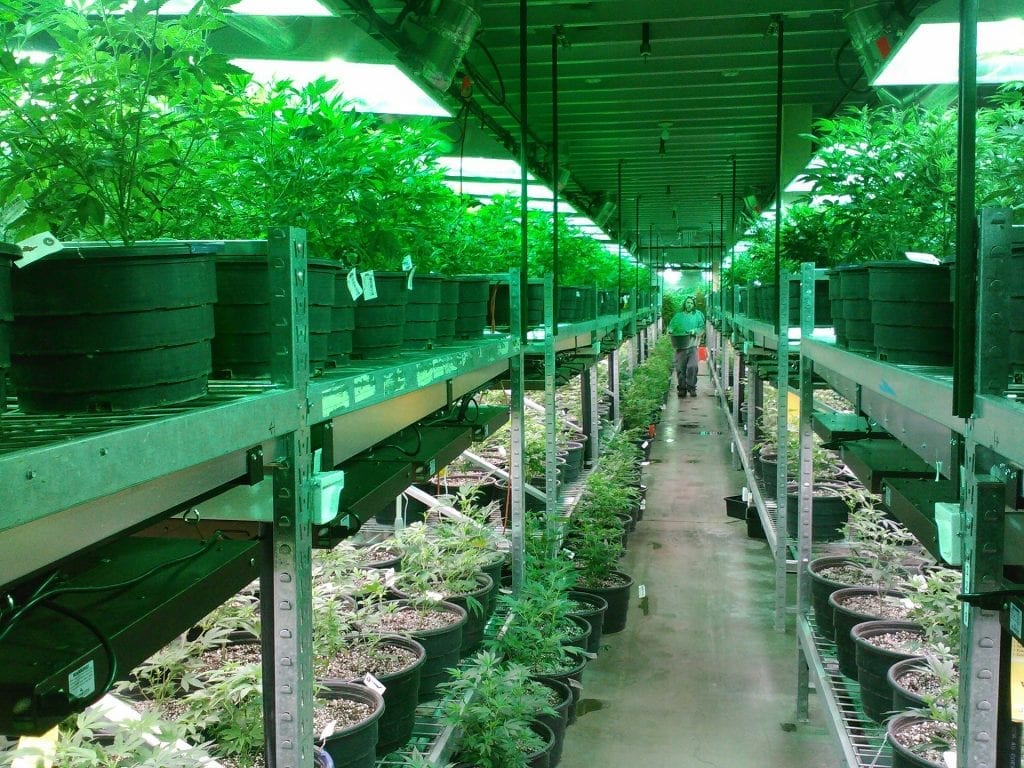
To maintain the air circulation inside your grow room, you need to have proper knowledge of how groom room ventilation works.
We know you have a lot of questions, but we have got you covered with our complete guide on the Grow Room Ventilation Setup.
Let’s dive in.
Does a Grow Room Need Ventilation?
Yes, and you are probably wondering why. The answer is pretty simple, though.
We will have a look at the basic biology of plants to help you understand why ventilating your grow tents is important.
Here we go.
Carbon Dioxide Control
For a moment, take your grow room out of the picture. Imagine your plants are exposed to the outside world.
Now, your plants can get sufficient carbon dioxide from the fresh air, water from the roots, and energy from the sun to carry out photosynthesis. Recall that plants need photosynthesis to make food.
Keeping the above scenario in mind, what do you think will happen to indoor plants if they don’t get enough fresh air?
Your plants will end up starving because of poor photosynthesis. You see, there should be a proper way for the fresh air to get in your grow room, or your plants won’t stand a chance.
Is grow room ventilation setup only important because plants need carbon dioxide from fresh air to make food?
Not really, no.
Heat Control
You may wonder, how do plants manage to survive in a grow room without sunlight? Well, we have an alternative known as grow light to replicate the sun’s energy.
However, it’s not a good idea to use grow lights if you haven’t installed a grow room ventilation setup. We will get to that part later on in this article.
Here, you need fresh, circulating air to control the excess heat because grow lights can increase the internal temperature and can impact on plants’ growth.
Humidity Control
Can you recall? Humidity refers to the amount (percentage) of water vapors present in the air.
As we know, the air is more humid during summers. Why? Because the heat allows the water particles to move faster.
As a result, the air gets concentrated with water vapors, resulting in high humidity. Your plants can only grow to their full potential if the humidity within your grow area is around 70% or less.
Once it gets more than that, the stomata inside the leaves will start to clog. Long story short, your plants won’t have enough carbon dioxide for photosynthesis.
That’s not something we are looking for, right?
Simple solution: improve ventilation.
If that’s not enough, consider buying a (de)humidifier.
Do you see the point? If you want to maintain the low humidity inside your grow tent, you have to make sure the internal temperature of your grow area is not high.
For that, you need to have a proper airflow by installing exhaust fans to ventilate your grow area.
Bacteria Control
You wouldn’t want the pests and spider mites to suck up your plant’s nutrients.
However, if your soil isn’t dry enough, there is nothing you can do to avoid insect growth. The best thing to do is to keep your soil from getting moist at any cost.

A good ventilation system with oscillating fans can solve your problem here.
What you need is a strong gust of wind to keep the top layer of soil dry, which can slow down the growth of pests and insects. Come to think of it, a strong wind will make it difficult for the spider mites to live in the soil as well.
Wind Stress Control
Up till now, you must have noticed that we are trying to recreate the outdoor environment inside our grow tent.
Even if we keep the above points aside for a while, your plants still need a proper airflow for strengthening stems. Plants are used to swinging and bending while they grow outside. In fact, this is important for their health and strength.
In a grow room with still air, your plant’s stem won’t be strong enough to withstand wind pressure. In other words, your plants will grow with weak stems.
This is why it is necessary to keep the air circulating within your grow area from the start. This way, you can boost up the stamina of stems for withholding strong breezes.
We are done with discussing the benefits of grow room ventilation in detail.
Now, the next thing to do is figure out what you need for your grow room ventilation setup.
What Do You Need for a Proper Grow Room Ventilation Setup?
You may have an idea of what’s coming next because we mentioned using fans to keep the air circulating.
But, what kind of fans were we talking about?
Keep reading to figure out more.
Oscillating Fans
Yes. The common oscillating fans are exactly what you need to keep your plants alive and well. We understand if you were expecting some custom-made, fancy grow room fan.
The oscillating fans are a great way to keep your grow room ventilated. The best part? It is quite an inexpensive way. You can simply buy them online or from any nearest supermarket.
Also, you can keep them running all day long without having the electricity bill touching the sky.
For a small grow room, or a grow tent, one oscillating fan is usually enough. That’s right. One fan can make your whole ventilation system work.
However, if you think that one fan might not be enough, you can always add more fans; No restriction here.
Interestingly, growers have upped their ventilation game with grow room air conditioners. They work just like fans, only the air is cooler, and the electricity bill is higher.
Fan Size
This is a very important factor. Maybe, you think that your grow room can work just fine with one fan. You go to the supermarket to get that one perfect fan, only to realize that there are so many sizes available.
Now, we are back to square one. Which size is the right size? A million-dollar question.
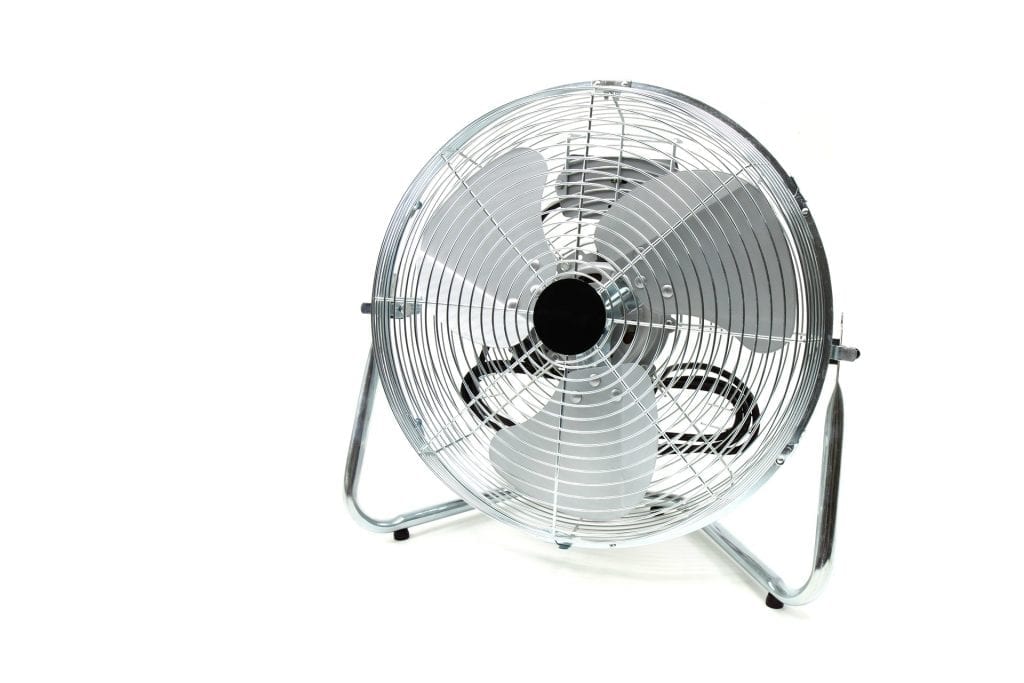
Well, there are various kinds of fans available, varying in diameter from 4 to 12 inches. Our recommendation is to get a 6-inch oscillating fan. This should be enough to ventilate your grow room properly.
However, if you want to buy or have the only option of buying a 4-inch oscillating fan, get at least two of them to be on a safe side.
Fan Placing
You bought the perfect fan. Now, you want to fix it in your grow room as quickly as possible. You are all set to bring the perfect gust of air to your plants. But wait, where should you place the fan?
Is there an ideal place? How do you make sure that the ventilation system is working up to the mark?
Well, here are some great tips to ensure your plants get the best air.
- First of all, try to get two oscillating fans to ensure proper air circulation. If you own a small grow tent, get two small fans. Place one above the plants and the other one on the ground. This set-up will make sure that all plants are equally getting air from all sides.
- Make sure that the oscillation is on. Fans should not provide air in one direction all the time. While you might think that focused air can help your particular plants, it is not true. Too much wind pressure can make your plants go weak. In the worst cases, they can die.
- Make sure the oscillation covers all the areas. If there is any part that does not get direct air at all, you should fix the fans’ position.
Extractor Fans
Now that you have set-up the oscillating fans, your plants have plenty of air. The fans are a continuous source of air. Air more than needed can cause humidity. This means that your grow room now needs an exhaust fan to make sure things remain under control.
The extractor fan will only regulate the humidity in your grow room and has nothing to do with bringing air into the room. Hence, do not confuse it as being a source of air.
Fan Strength
Again, you have to decide the right exhaust fan for your grow room. The process of picking up the perfect extractor is quite simple and straightforward.
For this calculation, you will need to determine the volume of your grow tent and the number of minutes you want the air to be replaced once in your grow room.
Usually, the air should be replaced once every three to four minutes.
That’s it. This is all you need to find the right exhaust fan for your grow room.
Before we do a supposed calculation, let’s give you an idea about CFM.
CFM is the amount of air moved and is calculated as cubic feet per minute. When you buy an exhaust fan, you pick it based on its CFM.
For example, suppose your grow space has a volume of 720 cubic feet. You want the air to get replaced every three minutes.
Divide 720 by 3. The answer is 240 CFM.
This means that if you want to buy an extractor fan for your grow room that is 720 cubic feet, you should get one that is at least 240 CFM.
Remember that this calculation provides the lowest CFM exhaust fan you can get. Our recommendation is to go with a little higher CFM rating since there are many other factors at play such as grow lights, number of plants, humidity, temperature, etc.
Fan Placing
Once again, you need to figure out the perfect position for your exhaust fan for efficient humidity control.
Well, you know that hot air rises above. This gives us an advantage. Simply put your exhaust system somewhere above your plants, in the upper area of your grow room.
Exhaust fans create a vacuum-like effect, sucking all the hot air and making the cool air go up. This helps greatly in the overall air circulation.
Now that you know what your grow room needs, we will take a step ahead and get to the main part.
Let’s see what steps you have to take for ventilating your grow room.
How Can I Ventilate My Grow Room?
Now that you have all the tools, and know, how they work, it’s time to put them at work. How do you get it all started?
The first and foremost thing to do is “bringing air into your grow room”.
How? There are two common methods.
- Passive Intake
- Active Intake
Passive Intake
As the name suggests, this method relies on passive airflow and negative pressure. What does this mean? It means that there will be a fan that blows air out but no fan will blow air inside.
Instead, you will make a hole that will let the air in, passively.
This is a slow air and a more natural process. If you plan to follow this method, make sure that the intake hole is at least four times the exhaust air hole.
It will provide a better suction to your ventilation system while enhancing the effectiveness of your fans without exhausting them.
Active Intake
In this case, you will use an intake fan to blow air inside the tent and another to blow the air out. The fan helps in drawing the air in quickly and directly. Also, in this method, the size of either hole (intake or exhaust) does not matter.
FAQ
Why do I need a fan in my grow room?
Fans play a very important role in the healthy growth of your plants. Intake fans bring fresh air from outside into your grow room. Oscillating fans keep the air circulating in the room and exhaust fans reduce the levels of humidity by throwing the hot air out.
Without a fan in your grow room, the air would become still. This can lead to the weakening of your plants and in worst-case scenarios, kill them.
Does a grow room need ventilation?
Yes. Every grow room requires ventilation. Plants need fresh air circulation to grow. This means fresh, cool air in and hot, stale air out. Air exchange is super important. If an indoor grower does not get ventilation right, he/she is set to face big problems in later stages.
How often should air be exchanged in a grow room?
The air in your grow room should be exchanged every 3 to 5 minutes. This means that if your grow room has a volume of 720 cubic feet, you should consider buying an exhaust fan at 144 – 240 CFM.
Where should I put my oscillating fan in my grow room?
If you have one oscillating fan, put it in front of your plants at least 2 meters away at slow speed. Make sure that all the areas are hit with fresh air.
However, if you have two oscillating fans, put one on the ground and the other above the plants. This can help in better air circulation.
Do you need fresh air in a sealed grow room?
Yes. A sealed grow room can help you greatly with CO2 enrichment. However, no matter how hard you try, you cannot give the plants what fresh air gives. Hence, it is better to use a hybrid system where you allow an exhaust fan to keep your sealed grow room ventilated.
Many indoor growers have a hard time believing this logic.
You can use it at a slower speed to avoid any excessive sucking of CO2.
What is negative pressure?
Negative pressure is when the air pressure is lesser in one place than the other. This allows the air from the high-pressure zone to slowly flow into the area with low pressure.
This method is used in passive air intake to bring air into the grow room without an intake fan.
What kind of ducting do I need for my grow room?
There are a lot of things going on in a grow room simultaneously. Make sure that your ducting is capable of surviving the grow room environment. You can ensure the presence of certain features such as thermal endurance, fireproof coating, etc.
Also, make sure that the ducting’ length and diameter are according to your grow room requirements.
Final Verdict
Do not take your grow room ventilation system easy. Pay close attention to each step and get it right. If this is your first time, you might get a few things wrong. But that’s okay! Eventually, you will get a hold of it.
All the information, shared in this article, will help you in overcoming challenges you would face while installing or improving your grow room ventilation system. It may look like a lot of work but once you succeed in installing the optimized ventilation system in your grow room, the results will be worth all the effort.
Table of contents



